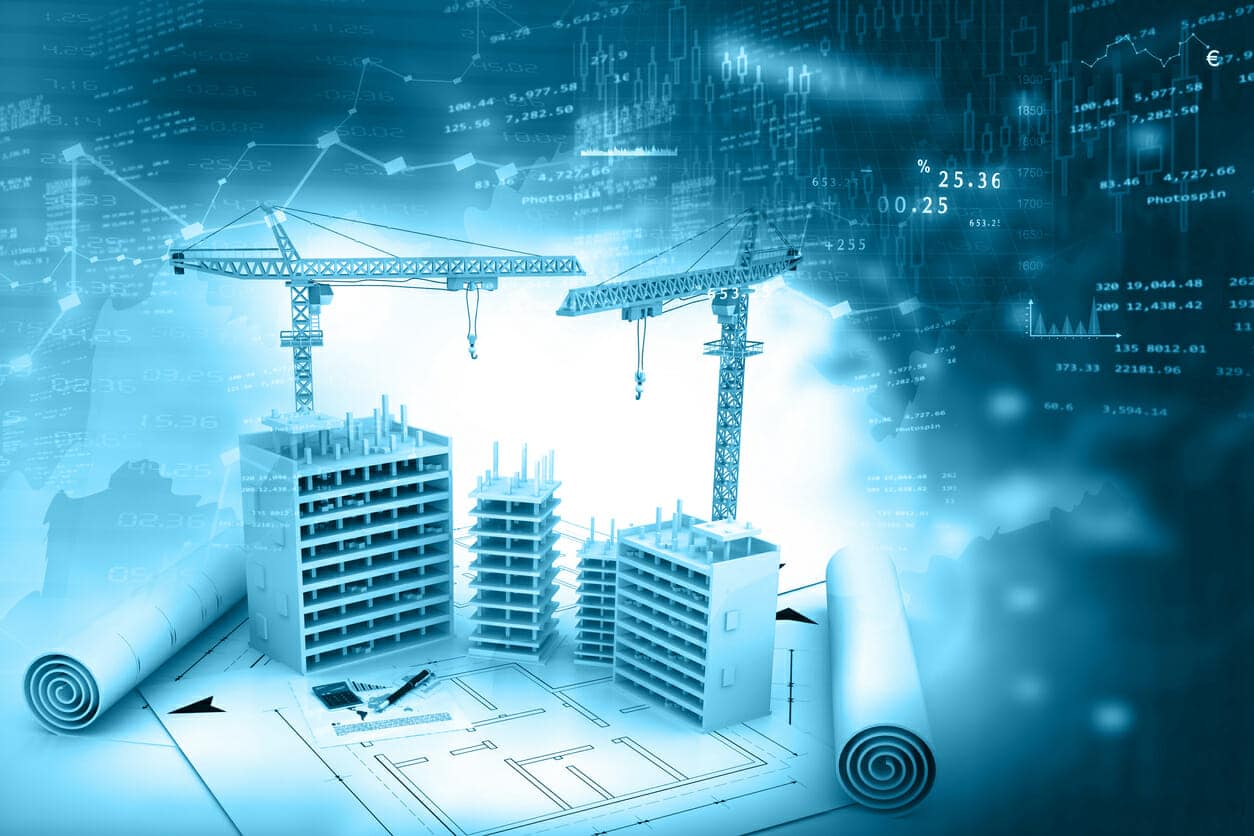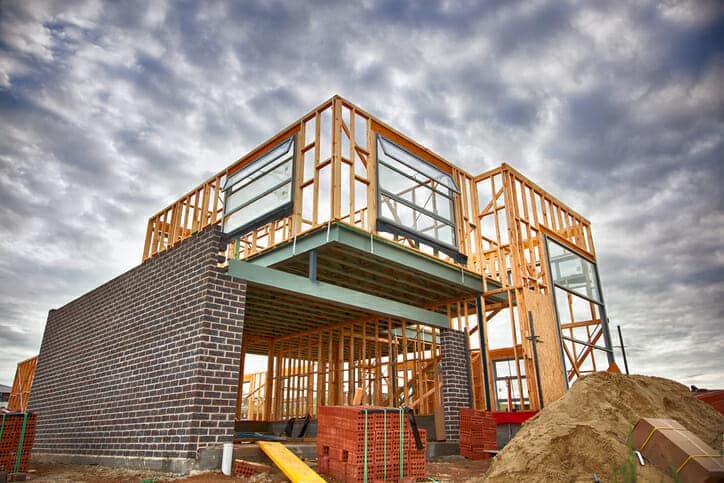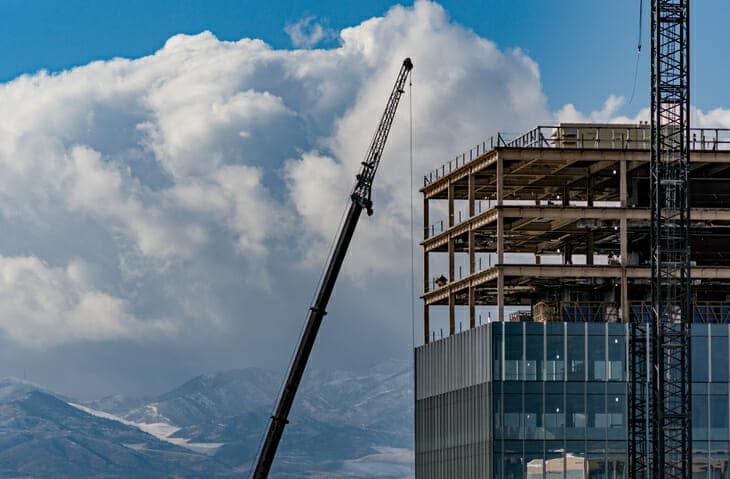
Current Trends in Commercial Construction Industry
The construction industry continues to recover and has shown significant growth as the world moves forward from a worldwide pandemic and subsequent shutdown. The United States construction industry is expected to grow by 3.1% in 2022, after which it is predicted to moderate to an annual average growth of 2.2% for the following three years. Residential construction has really been at the forefront of this growth, with percentage growth rates in the double digits at times. This residential sector is expected to continue to grow as demand continues and mortgage rates and available inventory remain low. However, the commercial construction industry trends towards positive growth as well.
How is the Construction Industry Doing?
Current Construction Market Conditions and Emerging Trends in Construction Industry
Current events continue to impact construction market conditions, resulting in new construction trends for the industry. The impact of technology is affecting the construction market in new and exciting ways. The Infrastructure Investment and Jobs Act recently passed by the U.S. government will have a large impact on the emerging trends in the construction industry. Impacts to the bottom line for commercial construction have been felt as inflation continues to rise and the coronavirus Delta variant continues to negatively impact labor, materials, and a range of operations within the industry. However, growth continues despite supply chain challenges and a shortage of workers. These factors are explored in-depth below.
Construction Industry Trends and the Impact of Technology
In the past, the construction industry has been largely dominated by large, single-build projects won by a traditional bid and carried out in more or less standard ways. This process is rapidly changing. Jumpstarted by the pandemic and driven by a growing technology sector, traditional methods are being abandoned and adapted. The rise of technology in every step of the building process, from construction procurement to employee safety, demands the industry revisit how it has conducted business in the past, according to Deloitte. AI, robotics, and other smart technologies are being applied to traditional construction processes to expedite timelines and improve efficiency for tasks such as land surveying, equipment control, and more.
The rise of smart, connected cities will lead to more complex projects with multiple layers. Smart cities are technology-focused and aim to improve the quality of life across the grid. For example, they use technology to monitor air quality, waste management, and traffic. They care about installing cutting-edge technologies that improve connectivity, such as universal access to broadband capabilities and other global communication services. Smart cities also have a greater emphasis on sustainability, equality, and permanence.

To recap and expound, technology will impact the construction industry through:
- Job scheduling and budgeting tools, design programs, and more tech-focused project management during construction procurement
- On-site robotics to perform repetitive tasks
- Self-driving construction vehicles
- Drones used for inspections and land surveying
- The use of AI and simulations
- Wearable sensors to monitor worker safety
- The rise of smart cities, which demand high-tech intensive developments and projects
The Construction Industry and Government Investment
The U.S. government has recently pledged significant investment in America’s infrastructure through the Infrastructure Investment and Jobs Act. These investments include:
- $110 billion for roads, bridges, and new projects
- $65 billion to boost the country’s broadband
- $7.5 billion for the electric vehicle (EV) and EV charging industries
- $73 billion for upgrades to the electricity grid
- $55 billion towards water system improvement and installations
- $39 billion to public transit improvements
These focused investments will be given to states and local governments to upgrade and revamp America’s infrastructure in what many are saying is a much-needed overhaul.
The Infrastructure Investment and Jobs Act offers an outstanding opportunity for the commercial construction industry both in solving past problems and stimulating economic growth in a variety of areas. Added revenue to cities will drive further revenue and spur job creation. Access to revenue that cities historically have not had has the potential to revamp areas that previously had little to no economic and commercial growth. Lastly, strengthening a city’s foundation in roads, broadband, water systems, and public transit may spur economic growth in the commercial industry in both new and old areas.
What’s New in Commercial Construction? Emerging Trends in Construction Industry
This is a fascinating time for the construction industry. The conditions discussed above show that there are new and exciting things on the horizon, but they are not without their challenges. Trends in construction procurement, building and construction materials, and the labor force each have challenges that the industry will need to meet in order to grow profitably. Detailed below are more trends that show where the industry is headed and what challenges lie in wait.
Construction Trends: Construction Procurement
Despite growth, many construction companies continue to experience low profitability margins and increased pressure on their bottom line. Fluctuating and rising costs of building materials and a labor shortage play a significant role. The growing complexity of projects and fierce competition from global companies also present a challenge to the industry. Contractors need to be aware of and versed in these issues in order to prioritize efficiency and utilize cost-saving techniques in order to succeed. According to Deloitte, it is “important for contractors to be proactive in managing processes and operations that contribute to margins and profitability, adding efficiencies and optimization where possible.”
This begins during construction procurement. As construction management secures the necessary goods and services to fulfill projects, they must be aware of these fluctuating costs and delayed times and plan accordingly. Clear communication with clients and potential clients is key to successful project procurement, even though early conversations may prove challenging. Providing a good value while still maintaining quality workmanship is a fine line to walk with this increased pressure, but can be successfully done when management is fully aware of expectations and potential issues at the start.
Construction Trends: New Trends in Building and Construction Materials
The COVID-19 pandemic significantly disrupted supply chains and repercussions are still being felt today, with many construction materials delayed and unavailable. The cost of building materials is expected to continue to rise, including the price of wood, brick, concrete, and steel. Building materials are more difficult to obtain and wait times have increased significantly in certain sectors. Lastly, in some areas, land has likewise become a pricey, scarce commodity both for new builds and existing infrastructure.

- Engineered Cementitious Composite (ECC)
- Engineered Timber
- Recycled Materials
- 3D Printed Building Materials
- Modularization
- Prefabrication
Trends in Commercial Construction: The Labor Issue
Like many other industries at this time, the construction industry is experiencing a labor shortage. This shortage is not a new problem. Deloitte has found that, over the past six years, construction job openings have increased by 50%, while the number of new hires trails behind at 14%. Shortages increase construction project times, stall projects, increase cost, and pose safety risks. The labor shortage is exacerbated both by demands for higher-paying jobs and changing roles on-site that demand new, specified skill sets and training.
With the steady decline in the number of construction workers, companies need to adapt and accomplish more with fewer laborers. The construction industry can address this trend through the following ideas:
- Increase construction equipment
- Increase automated processes
- Increase use of artificial intelligence, including robots and drones
- Create training and certification programs for job-specific roles
- Create apprenticeships and opportunities for advancement
- Offer bonuses and performance-based incentives
- Pay competitive wages
- Increase worker safety on site
Attracting reliable, skilled workers is an important component to a successful project completed on time. Construction companies need to invest in their workforce in order to attract, train, and retain labor. The industry can do so by investing in training programs, certification, and apprenticeships. As the industry becomes more tech-centric, workers will need to be trained and specific skill sets will need to be developed. Bonuses, performance-based incentives, and an emphasis on safety can all be used to attract and retain labor.
Increased labor reliability can also be obtained through a greater emphasis on machinery and automated processes. Contractors can increase the use of automated equipment and AI to increase worksite safety and decrease the need for manual labor. Investing in equipment that is life-cycle optimizing, as well as digital technologies, can also streamline and decrease labor needs.
Construction Market Trends: The Commercial Sector

Utah’s economy continues to see growth in many different areas. According to Utah Business, the fastest-growing companies are found in a variety of sectors, including solar energy, drop-ship furniture, tech accessories, beauty products, and software solutions. Looking at the fastest growing companies gives the industry an opportunity to see which sectors are currently on the rise in Salt Lake City and beyond, and gives contractors a taste for the varied future projects that will require innovation and creativity. Below are just a few of the sectors that stand out and may impact commercial construction trends:
- The Financial Sector: Firms offering lending, banking, and refinancing continue to grow and expand.
- The Housing and Real Estate Sector: Companies focused on assisting homeowners and firms to buy and sell their homes or businesses continue to see huge growth. Companies that provide renovations and aesthetics are also seeing success, particularly in the solar energy market.
- The Tech Sector: Software companies, business management firms, cloud computing, and marketing firms are some of the fastest-growing businesses in the state.
- The Industrial Sector: As many people continue to shop online and the region’s population continues to grow, more distribution and e-commerce space are needed and are being constructed.
The commercial construction industry continues to expand in Utah. Projections for Utah’s economy continue to forecast strong positive growth in the foreseeable future, which follows that the future for the construction industry will be equally positive.
Commercial Construction for the Future
Bodell Construction is well-equipped to meet the future trends in the commercial construction industry and beyond. With almost five decades of experience and over $2 billion in commercial projects completed and in progress in Salt Lake City and numerous other field locations, Bodell Construction is an established and trusted commercial construction contractor. We are aware of and well-versed in the trending issues and, by prioritizing efficiency and utilizing cost-saving techniques throughout the construction processes while still maintaining a high standard of safety and quality, we are prepared to succeed.
Our teams are committed to matching your standards and creating a space for thriving business, whether it be a remodel, addition, or an entirely new industrial facility. We partner with business owners, investors, tenants, and municipalities to make your project dreams a reality using integrated service capabilities, including:
- Site Analysis
- Site Development
- Project Risk Analysis
- Design Document Assessment and Review
- Value and Scope Assessment
- Material Cost Analysis
- Quality Assurance and Constructability Analysis
- Cost Modeling, Contingency Planning, and Cash Flow Projections
- Cost Estimating
- Value Engineering
- Solicitation and Qualification of Project-Specific Suppliers and Subcontractors
- Permit and Utility Coordination
- Environmental Sustainability Ideas and Pricing
- Project Schedule and Phase Planning
- Design/Build
- Construction Management
As outlined above, Bodell Construction is facing the newest trends in our industry head-on. Through our unmatched knowledge and experience, paired with our dedication to investing in cutting-edge technology and services, we continuously improve our service range and provide a top-rated experience to our clients.
Contact Bodell Construction
The commercial construction industry is poised to continue to grow in new and exciting ways. Bodell Construction is prepared for the trends occurring now and on the horizon. We are excited to partner with you for a better future. Contact Bodell Construction today for your construction needs. We’d love to help.




